#littoraria irrorata
Explore tagged Tumblr posts
Text
BREAKING NEWS THERE ARE SEA SNAILS THAT CAN FARM FUNGI
6 notes
·
View notes
Text

Name: Swirlypod
Debut: Super Mario Bros. Wonder
YIPPEE YAHOO! A brand swirlin' new snail fresh for 2023! It has been quite a long time now since we've gotten a new Mario snail, and even since I've posted about one, since I covered all the snailiest Mario snails a while ago. But lookie here! Snaily snaily snail for me to see and for you to view!
Swirlypod is so delightful! To get this out of the way first, yes, its eyes are not on the ends of stalks. Yes, this is good and okay. Some snails are like that! Especially freshwater snails. And that's the kind of snail that this snail seems to be! While sometimes seen on land, it is also seen emerging from (poisonous) swamps. It can breathe that!
Swirlypod's face is just so, so precious. Its big, innocent, curious eyes experiencing the world in the way only a snail could! Its big ol' bulbous antennae, more bulbous than they have any right being, more like a nudibranch's than a normal snail's! And its mouth! I think that's its mouth? It's like three scrumbly tentacles ready to scrumble down some delicious fungus!
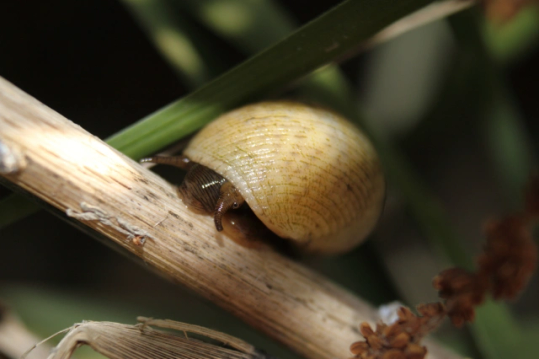
Did you know that the salt marsh snail Littoraria irrorata is able to FARM fungus? They damage marsh grasses to create large wounds for fungus to grow in, and even use their own poop as fertilizer! Snails can FARM!
Yes, indeed, what a wonderful snail we have here! Thank you, Super Mario Bros. Wonder!

...Hey! That shell comes right off! Now it's all Pod, with no Swirly! Does this mean Lime is The Impostor? I may have just asked you, but that was rhetorical. Don't ask me, because I don't know! Removable shells are a common ability for cartoon snails, and of course, the turtles of this world also have removable shells. I think it doesn't really mean much at all! Though, the idea of a "hermit slug" is very amusing. A snail who can't be bothered to grow its own shell. Maybe it wants to switch shells for different styles sometimes. A slow victim of fast fashion!
Wonder is one of those games where Koopa Troopas retreat into their shells when stomped, so Swirlypod is sort of a way to have Beach Koopa in the same game as the more standardly-behaving Koopa! Once it gets back on its foot, it will try to squirm back into a shell, if one is available. You can give it back! Just drop it down at your feet, and Swirlypod will have a home once more!
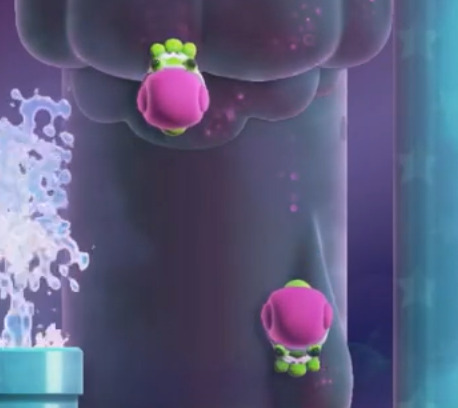
Another thing that sets Swirlypods apart from Koopas is that they are sticky slimy and can slither up and down vertical surfaces! Just like in real life! They don't only climb on the left and right sides of surfaces, either. They can even go on the surface facing the screen! Not just anyone is allowed to do that!
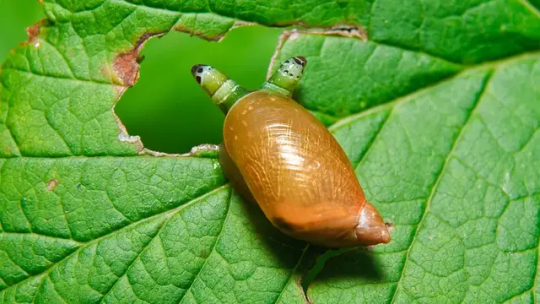
I am saving what may be the best tidbit for last! There is a good chance Swirlypod's bulbous antennae look familiar to you. That's because they look just like Leucochloridium paradoxum, the green-banded broodsac, everyone's favorite snail parasite! The flatworm that inhabits a snail's eyestalks, making them look more like caterpillars to get a bird to eat them so they can continue their life cycle! Swirlypod definitely isn't supposed to be like, ACTUALLY infected by this funny worm, but I think the resemblance is very much intentional, between the shape and coloring. And that is so awesome to see! This isn't even meant to be a scary snail or anything, but they represented a freaky parasite anyway!
546 notes
·
View notes
Text
wikipedia tabs i have open on new year's day
Railgun
Gunboat
Loess
Kamchatka Peninsula
Ansible
Hainish Cycle
Key deer
Mount Rainier
Socialism with Chinese characteristics
Xi Jinping Thought
Historical nihilism
Three Represents
Scientific Outlook on Development
Blue crab
Callinectes sapidus
Crab cake
Diamondback terrapin
Turtle soup
Yellow-bellied slider
Red-eyed slider
Littoraria irrorata
Halite
Appanage
Princess
Penicillin
Raffinate
Kaali crater
Hittite mythology and religion
Augury
Dovecote
Fasenjān
Confucianism
Messier 87
Elliptical galaxy
Whirpool Galaxy
Spiral galaxy
Pinwheel Galaxy
Milky Way
Sagittarius A*
Messier 87
History of Christian universalism
Kardashev scale
Grand duke
PSR B1257+12
PSR B1257+12 B
55 Cancri e
Carbon planet
Chthonian planet
Tholin
Luna (goddess)
European rabbit
Heroin
Abscess
Acedia
Weltschmerz
Razor
Synthetic fiber
Marshal of Yugoslavia
65 notes
·
View notes
Text
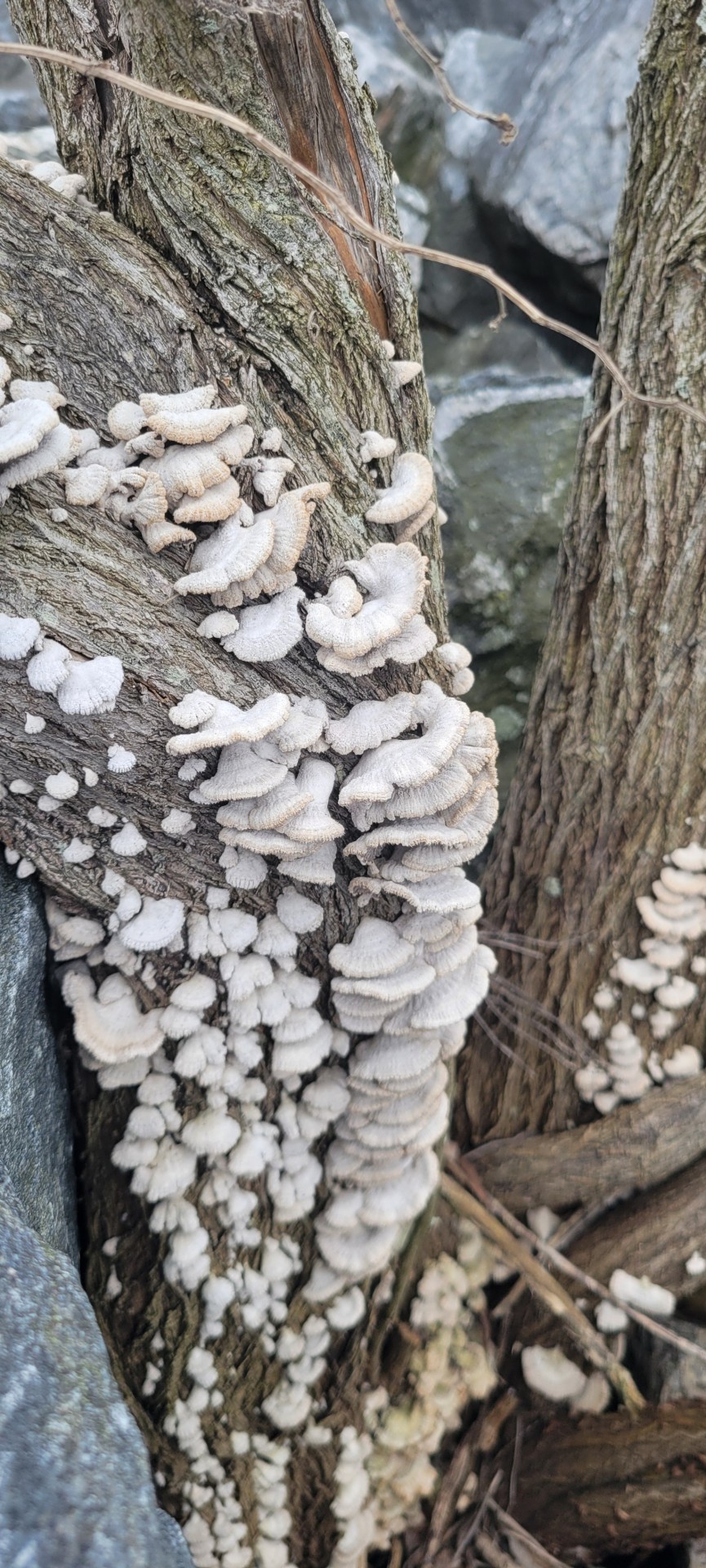

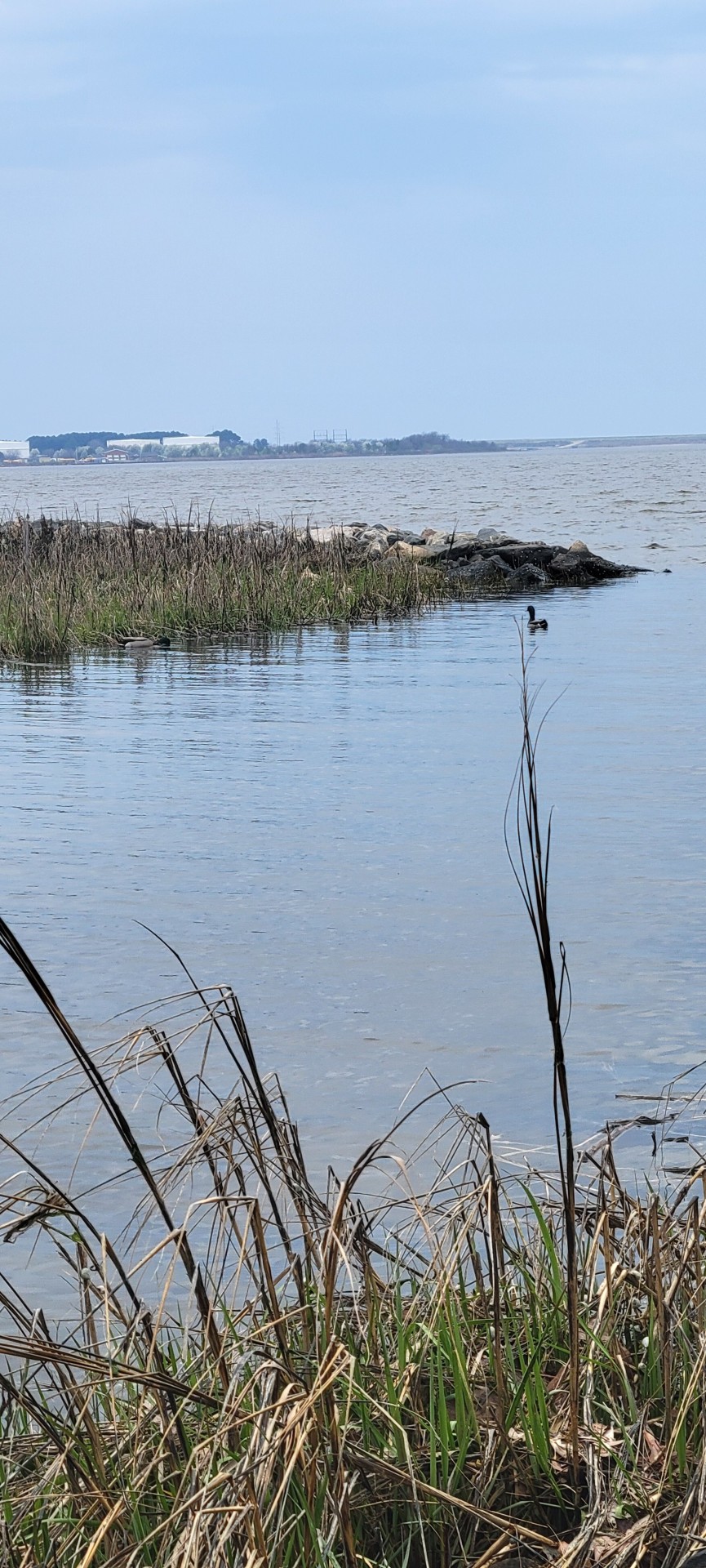
I found a ton of little splitgill mushrooms on a tree near the water the other day! There were also LOTS of snails 🐌
IDs:
1. Splitgill mushroom (Schizophyllum commune)
2. Marsh periwinkle snails (Littoraria irrorata)
3. Male mallard (Anas platyrhynchos)
#plant identification#escapism#nature#naturalist#mushrooms#fungi#wild fungi#shelf fungi#snail#marsh#ducks#chesapeake bay#animals#animal identification#bird identification#birding#mycology#explore#ecology#outdoors
5 notes
·
View notes
Text
Native Fish Hunting - Interlude!

Okay the last post didn't have a lot of interesting going-ons, I'm sorry to say. But this one will have some neat stuff I promise! Me and the wife drove over to southern Alabama to do some kayaking and found ourselves at a place called Crab Island. You best bet I made a beeline for it once I saw it on the map! Lots of cool native species to be found there.

The most populous invertebrate species on the island was of course... crabs! I mean, not really crabs, but they have "crab" in the name. We found dozens of Green/Striped Hermit Crabs (Clibanarius vittatus), one of our native brackish species that sometimes find their way into the aquarium trade. We found many between 1 and 3-4 inches long, I'd wager. This guy is covered in live snails, as were many of the other larger ones. I think they were immature Fighting Conchs (Strombus alatus).
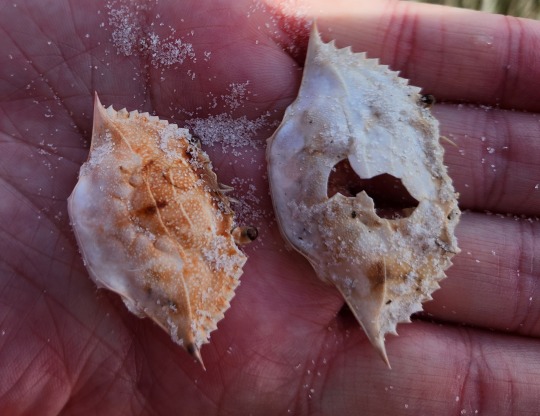
Anybody from the East Coast of the US is probably familiar with this species - the Blue Crab (Callinectes sapidus)! We found many of these shells washed up and spied a few live specimens, but I only made half-hearted attempts to catch them bare handed so you'll have to forgive me. I'm not really in the mood to be pinched!

We didn't see many live aquatic snails, mostly just the shells, but we did happen upon this American Crown Conch (Melongena corona), far from its maximum size of 5 inches. Still, a very cool find and I believe the first time I've happened upon a still-living specimen.

We weren't limited to aquatic snails either! We saw a dozen or two of these Marsh Periwinkles (Littoraria irrorata) which I found particularly interesting because we have the same species up north in Virginia. Not an active species by any stretch of the imagination but I've always found them neat.
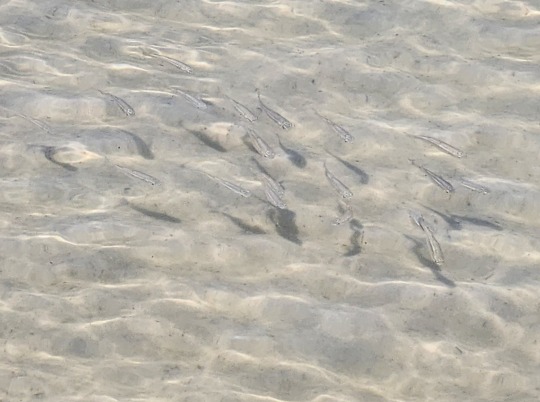
My wife correctly reminded me that I did not have an Alabama fishing license, so I left my nets in the car. Which is kind of a shame because there were hundreds of these killifish species (Fundulus spp) and I'd like to have known which they were! I'm pretty certain they are Gulf Killifish (F. grandis) but iNaturalist suggests that Longnose Killifish (F. similis) is more common here. I don't think it's the latter, but hard to say!

I didn't need a license for this guy though - this tiny Pinfish (Lagodon rhomboides) was deceased and must have just washed up moments before we arrived because it was in fantastic shape. Pinfish are probably one of the most common coastal fish in this area, but this was the first one I've found washed up like this.

I love these things. This is a skull of a Sea Catfish (family Ariidae), sometimes called Crucifix fish because of the shape of their skulls. This one was submerged in a pool of stagnant water, probably having been picked over by the fish here. iNaturalist suggests it is likely a Hardhead Sea Catfish, but given that Gafftopsail Catfish are also local, I'm not comfortable making such an ID.
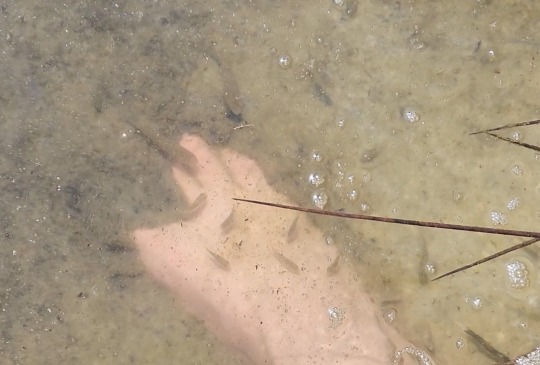
As I picked around in the pool of water, my feet were nibbled on by many of the smaller fish here! I could make out some of the same killifish as before, but also Sheepshead Minnows (Cyprinodon variegatus) as well - another species we can find in VA. Didn't get much in the way of good pictures due to glare, but fun experience nonetheless.
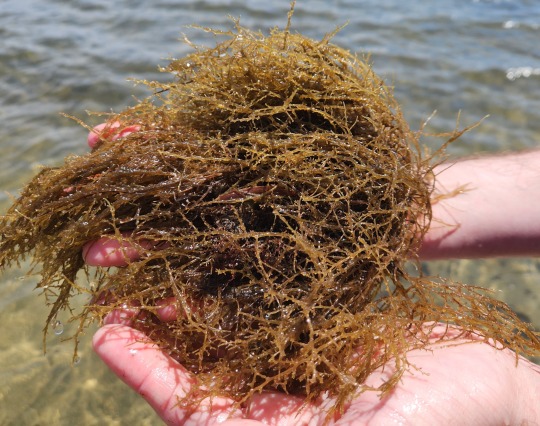
While I found some Sargassum seaweed washed up here too, the more interesting specimen was this fella! I think it's a Graciliaria species, but really it's hard to tell. Right now people are going NUTS online about sargassum washing up in Florida and any searches for "seaweed in florida" is coming up with hundreds of hits for those articles. So I'm gonna take my best guess!
3 notes
·
View notes
Text
This Interesting, Clever Little Snail Actually Farms it’s Own Food
This Interesting, Clever Little Snail Actually Farms it’s Own Food tells readers about the marsh periwinkle, a salt water snail that eats algae, dead leaves, and fungi. It explains how these snails produce their favorite food on the plant stalks.
Marsh Periwinkle Okay, okay so it’s a snail and almost certainly not terribly clever, but still, it’s pretty cool that this snail actually does grow some of it’s own food. We’ll get into that in a little bit, but first I want to give you some background on these snails. They are marsh periwinkles (Littoraria irrorata), and they live exclusively in salt marshes. Salt marshes are a unique type of…

View On WordPress
#marsh periwinkle#marsh periwinkle snail#nature#nature photographs#salt water snails#sea snail#snails#wildlife#wildlife photographs
0 notes
Photo

An adorable little talitrid amphipod (cf. Orchestia) hitching a ride on a Marsh Periwinkle (Littoraria irrorata).
St. Mark’s NWR, Wakulla County, Florida
90 notes
·
View notes
Photo

Marsh Periwinkle (Littoraria irrorata) on marsh grass, Matanzas Inlet, St. Johns Co. Florida 8/29/2004 (about 20 mm.) | Digital image by Joel Wooster (x)
0 notes
Text
Shoreline oiling effects and recovery of salt marsh macroinvertebrates from the Deepwater Horizon Oil Spill
Salt marshes in northern Barataria Bay, Louisiana, USA were oiled, sometimes heavily, in the aftermath of the Deepwater Horizon oil spill. Previous studies indicate that fiddler crabs (in the genus Uca) and the salt marsh periwinkle (Littoraria irrorata) were negatively impacted in the short term by the spill. Here, we detail longer-term effects and recovery from moderate and heavy oiling over a 3-year span, beginning 30 months after the spill. Although neither fiddler crab burrow density nor diameter differed between oiled and reference sites when combined across all sampling events, these traits differed among some individual sampling periods consistent with a pattern of lingering oiling impacts. Periwinkle density, however, increased in all oiling categories and shell-length groups during our sampling period, and periwinkle densities were consistently highest at moderately oiled sites where Spartina alterniflora aboveground biomass was highest. Periwinkle shell length linearly increased from a mean of 16.5 to 19.2 mm over the study period at reference sites. In contrast, shell lengths at moderately oiled and heavily oiled sites increased through month 48 after the spill, but then decreased. This decrease was associated with a decline in the relative abundance of large adults (shell length 21–26 mm) at oiled sites which was likely caused by chronic hydrocarbon toxicity or oil-induced effects on habitat quality or food resources. Overall, the recovery of S. alterniflora facilitated the recovery of fiddler crabs and periwinkles. However, our long-term record not only indicates that variation in periwinkle mean shell length and length-frequency distributions are sensitive indicators of the health and recovery of the marsh, but agrees with synoptic studies of vegetation and infaunal communities that full recovery of heavily oiled sites will take longer than 66 months. from # All Medicine by Alexandros G. Sfakianakis via alkiviadis.1961 on Inoreader http://ift.tt/2uHVuP2 from OtoRhinoLaryngology - Alexandros G. Sfakianakis via Alexandros G.Sfakianakis on Inoreader http://ift.tt/2uOA3aI
0 notes
Text
Effects of Deepwater Horizon Oil on the Movement and Survival of Marsh Periwinkle Snails (Littoraria irrorata)
Effects of Deepwater Horizon Oil on the Movement and Survival of Marsh Periwinkle Snails (Littoraria irrorata) https://www.environmentguru.com/pages/elements/element.aspx?utm_source=dlvr.it&utm_medium=tumblr&id=5214592
0 notes
Text
Effects of Deepwater Horizon oil on the movement and survival of marsh periwinkle snails (Littoraria irrorata)
Effects of Deepwater Horizon oil on the movement and survival of marsh periwinkle snails (Littoraria irrorata) https://www.environmentguru.com/pages/elements/element.aspx?utm_source=dlvr.it&utm_medium=tumblr&id=5127339
0 notes